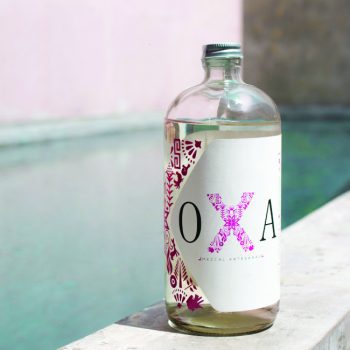How can the mezcal sector grow?
With only 3% of total agave spirits volume, mezcal has a lot of potential for expansion. But what will that look like?

*This feature was originally published in the February 2024 issue of The Spirits Business magazine.
Agave spirits have been one of the biggest success stories in drinks over the past few years. While Tequila has led the charge, others are enjoying the halo effect, mezcal in particular. But while these two Mexican spirits have a lot in common, there’s a lot to distinguish between them too.
For a start, there’s volume. In 2022 Tequila accounted for 96% of total agave spirits volume, according to IWSR Drinks Market Analysis. Mezcal was responsible for a mere 3%, but it’s making headway – growing by 23% in volume between 2021 and 2022, ahead of Tequila’s comparatively modest increase of 13%. IWSR predicts mezcal’s volumes will rise by a compound annual growth rate of 10% (2022-2027), with Tequila up by 7% over the same period.
Mezcal has invariably benefitted from the increased attention on the broader agave spirits category, and in turn from those consumers ready to move on from Tequila. “Mezcal offers a craft and authentic offering that especially resonates with Tequila consumers, and with bartenders who are looking for alternatives,” says Jose Luis Hermoso, IWSR research director Central and South America.
Sheyan Patel, chief commercial officer for mezcal brand The Lost Explorer, agrees. “The global mezcal category is experiencing dynamic growth, following the pathway that Tequila has created, and leading directly to an increase in curiosity about agave-based spirits.”
For Mantas Zlatkus, global portfolio director (innovations) for Amber Beverage Group, the two spirits are distinct, as are their consumers. “The growth of mezcal was ignited by the explosion of the Tequila category worldwide, but mezcal tends to attract more mature and sophisticated customers who are already very familiar with Tequila, and are looking for something new and different, but similar,” he says.
“Mezcal is all about craft, character, provenance, and authenticity, which is slowly being eroded in the Tequila category, particularly with the growth of brands that rely on celebrity endorsement.”

Beyond the effect that Tequila has had on its good fortunes, mezcal has a lot going for it. Iván Saldaña, co-founder and chief innovation officer for Casa Lumbre, attributes its success to a growing appreciation for Mexican culture, as well as changing consumer preferences. “People are looking for more complex flavours, and with wider licence to use different agave plants comes different flavour profiles to be explored,” he says.
Nikša Pirović, managing founder of German drinks company Pacific & Lime, believes “mezcal’s growth is influenced by several factors, including diverse terroirs and traditional production methods”.
These add to mezcal’s appeal, particularly when it comes to the ingredients used – and those that aren’t. As Bhalin Singh, co-founder and president of Hedonistas de la Fe, puts it: “As consumers become more educated, many seek ‘additive-free’ spirits, which artisanal mezcals cater for, while many premium Tequilas contain undisclosed additives.”
Creative producers
Traditional methods notwithstanding, all of this excitement around mezcal is inspiring producers to be more creative. “Mezcal is steeped in history, and for a long time the more traditional varieties, styles and tastes were considered to be the best, but that’s changing,” says Saldaña. “New generations of mezcal producers are having fun, introducing unexpected blends and ingredients, such as corn, for example.”
For Pirović, this means experimentation with different agave varieties. “Moving away from the dominant Espadín agave, producers are exploring a wider range of agave species,” he says, citing examples from Pacific & Lime brand Mezcal Noble Coyote, including sustainably grown agave Lyobaá.
Agave varieties are core to innovation for the category, believes Zlatkus. “The biggest potential for mezcal is experimenting with different agave varieties, different regions of Mexico, and agave plants of different ages, not to mention ageing the spirit in various barrels for different finishes, or using different filtration processes,” he says.
Hermoso is seeing examples of innovation that go beyond agave variety. “Following the rise of cristalino Tequila, Casa Lumbre recently launched Contraluz Cristalino, claiming that it is the first cristalino mezcal,” he says.

And while some are filtering out colour to create cristalinos, others, such as Casa Dulce Reserva, are adding it: its Oxa Espadín is infused with Grana Cochinilla for a pink hue. “We’re contributing to innovations in the category, such as experimenting with different types of agave and production techniques like these to create unique mezcal expressions,” says commercial director Diego Sotomayor.
That’s not to overlook mezcal’s core agave variety. “In terms of styles and expression, mezcal made from Espadín will continue to be the key player, for its versatility in cocktails,” says Eduardo Gomez, director of Mexgrocer and founder of Ojo de Dios Mezcal. The latter brand is responsible for its fair share of innovation, including both a coffee and a hibiscus mezcal in its range.
“Wild agave mezcals will continue to grow, but they are facing sustainability challenges that affect supply,” adds Gomez, raising a concern held by many in the category.
Saldaña says: “One of the most significant challenges I see facing mezcal is to do with the sourcing of its raw materials.” He adds that he founded Casa Lumbre as a means of communicating the importance of not buying brands produced from non-cultivated agave plants. Saldaña highlights agave’s strengths as a crop, not least its efficiency when it comes to water use – particularly relevant in the context of climate change, something that is affecting other crops in Mexico, he says. “Where the majority of crops won’t grow, agave will, so there’s a great opportunity to use this land for new cultivations of agave.”
Pirović believes that considerations such as these are intrinsic to mezcal. “Sustainability is a key challenge for mezcal, with its artisanal nature calling for a focus on eco-friendly practices and cultural preservation.”
Melanie Symonds, director of Quiquiriqui Mezcal, says: “Agave farming and planning for the future in a responsible way, that’s sustainable both economically and environmentally, is most important.
“We are seeing far less biodiversity in the agave fields, with more farmers under pressure to plant only Espadín, creating a monoculture in the fields, leaving the agave susceptible to pests. This means more chemicals used, less nutrition in the soil, less wildlife, and smaller harvests.”
Responsible practices
Sotomayor echoes these concerns, adding that there’s a social component too. “As the demand for mezcal grows, it is crucial to balance this with responsible and sustainable practices to protect the agave species, as well as support the communities involved in its production,” he says. “Unfortunately, rapid growth can lead to the depletion of the resources necessary for production: water, wood, and the agave itself.”
The Lost Explorer’s Patel is aware of these concerns. “Innovation extends to sustainable and ethical practices, something that is very close to our hearts,” he says. “There is an increasing emphasis on our producers’ relationship with the land and agave plants. This commitment to ethical production aligns with evolving consumer values.”
On a practical level, Symonds has recently launched a five-litre bag-in-box format for Quiquiriqui, aiming to reduce the brand’s impact on the planet. “Sustainability is something that everyone needs to be paying attention to, especially the carbon footprint incurred when shipping glass bottles of spirits around the world,” she says.
“We wanted to dramatically decrease ours, and the launch of the bag-in-box of our flagship Espadín to the UK trade has offset our emissions dramatically.”
The mezcal category isn’t without its challenges beyond sustainability, either, particularly as it undergoes rapid changes in response to increasing demand. “Demand for mezcal by global markets brings new sales opportunities, but it has also pushed up the price of agave and caused supply shortages, meaning that producers’ costs have increased dramatically,” says Symonds. “It is becoming harder to sell traditional mezcal at prices competitive with the rise of the semi-industrial and industrial processes seen more and more as the category grows. And now with every corporate drinks giant having a mezcal or three in its portfolio, as a small independent brand it’s hard to compete against their huge distribution networks, and their ability to buy out back bars.”
Gomez agrees: “Market access and competition are a challenge, with some mezcal producers, particularly smaller, traditional ones, facing difficulties in accessing international markets. Increased competition, and the entry of larger players can make it difficult for traditional producers to maintain market share.”
Hermosa is mindful, too, of external challenges faced by the category. “Mezcal growth will not be immune to the current inflation and disposable income squeeze affecting many developed markets, as the category plays mainly in the super-premium-and-above price segment, especially in its export markets,” he says.
“The fact that there is little industrial production capacity of mezcal, unlike Tequila, and that the market is very segmented, means that downtrading in the category is unlikely. Consumers who can no longer afford mezcal could quit the category and start consuming something else.”
Despite these challenges, mezcal has plenty of room to grow, and no shortage of space in which to innovate, whether it follows in Tequila’s footsteps or forges a path of its own.
Related news
Butterfly effect becomes catalyst for Silver Lyan menu
